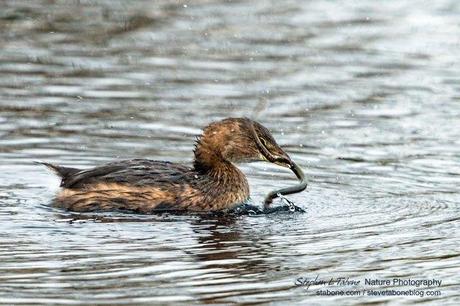 While on La Chua Trail at Paynes Prairie Preserve State Park in Gainesville, Florida, in late December, there were several Pied-billed Grebes in the canal that drains into Alachua Sink. The grebes were diving and hunting for prey in the murky water. It is not unusual to see them surface with small fish and crayfish. However, as I was watching, one of the grebes surfaced with a swamp eel. I usually do not photograph grebes, but this was an exception, because the grebe was struggling with a swamp eel as it was trying to position it for eating/swallowing. That behavior was worth capturing.
While on La Chua Trail at Paynes Prairie Preserve State Park in Gainesville, Florida, in late December, there were several Pied-billed Grebes in the canal that drains into Alachua Sink. The grebes were diving and hunting for prey in the murky water. It is not unusual to see them surface with small fish and crayfish. However, as I was watching, one of the grebes surfaced with a swamp eel. I usually do not photograph grebes, but this was an exception, because the grebe was struggling with a swamp eel as it was trying to position it for eating/swallowing. That behavior was worth capturing.
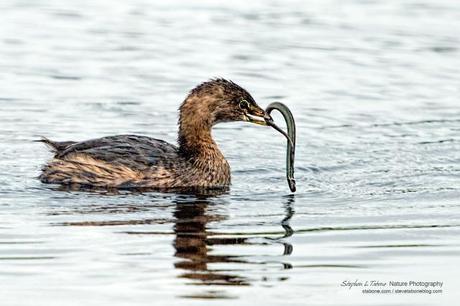
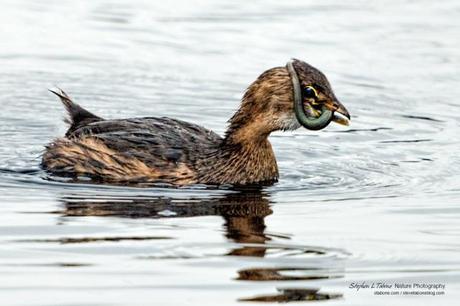
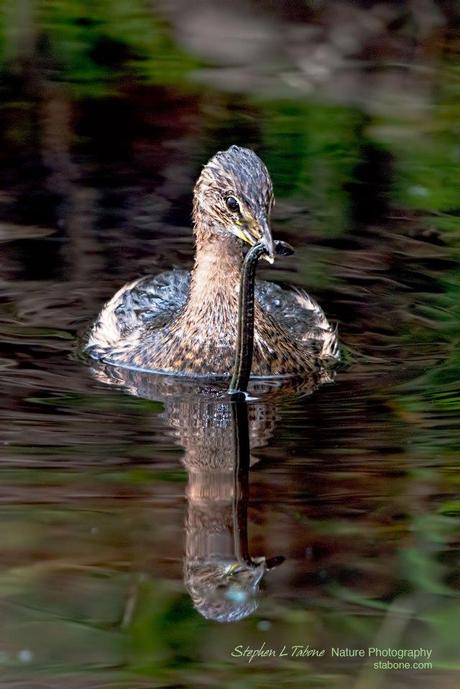
Pied-billed Grebes rarely fly. They migrate at night, and therefore, most people never see them flying. When danger is near, they dive below the surface of the water and can stay underwater for 30 seconds.
Pied-billed Grebes may breed and nest twice per year, laying between three to ten bluish white eggs. Young grebes may leave their nest within one day of hatching. Both parents participate in raising the young. Their numbers are declining in New England for unknown reasons, and some northern states have designated them as either endangered or threatened.
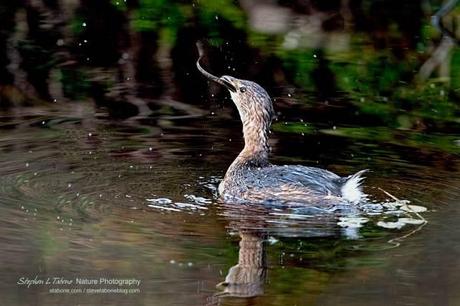
After “wrestling” with the eel for about ten minutes and tiring it out, the grebe was able to flip it into position (head-first) in order to swallow it (above image). It is hard to imagine that the eel tasted good, but it most likely filled the grebe’s stomach.
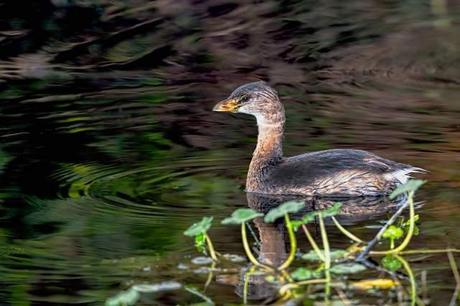
The images in this article were photographed with a Nikon D800 in Manual Mode, 600mm lens with a TC14 Teleconverter (equaling 850mm) at f/6.3 – f/8.0, 1/250 – 1/500 sec, and varying ISOs from 160 to 1600.
Comments on my blog and this article are appreciated and can be entered by clicking on “Comments” found below the Share this: section. You can also read other’s comments there.
